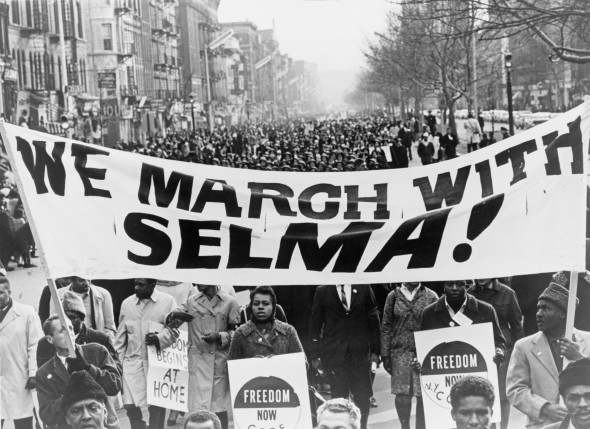Written by Brooke Stobbe
Reviewed by Tabu Batagira
“These pictures are going around the world…”
President Johnson, Selma
While the Oscar-nominated film Selma painted a moving image of the hardship and destruction of the civil rights march of 1965, it created an equally powerful story narrating the influence of the press. This story is still told today, as seen through the international coverage of the recent Ferguson riots.
Moments in the film captivated me with the powerful visuals and compelling narrative of the ghastly violence Dr. Martin Luther King Jr. and his peaceful marchers endured. The graphic images and powerful narration moved me as I watched the film in the theatre.

New York Times reporter Roy Reed (played by John Lavelle) narrated the events to his editor, with his words cutting through the images that spread across the front pages. At one point, Dr. King recognized the invaluable impact of making front headlines daily. The news coverage is what received national-turned-international attention, gaining traction and ultimately making a legislative difference in the movement.
Without this same attention in news media, would us students in Arizona be poignantly aware of the fury and destruction in the post- Michael Brown shooting incidents in Ferguson, Mo.? How else would the deeply-rooted issues of race and inequality be resurfaced, or at least brought to our attention?
Images, videos, stories, and information was dispersed on countless platforms, making headlines for months. As the riots and coverage heightened, so did global awareness, as we discovered in our group projects. Some images were disturbing, footage was alarming and stories powerful. Without journalists and storytellers, these issues would have no platform to spread in mass-awareness.

While news organizations have received criticism for focusing disproportionately on the events rather than the substantive issue such as the court decision and its implication on justice administration or equality, the press’s presence in the narrative nevertheless was unquestionably relevant.
Whether in 1965 or 2014, the news media provides a platform for national issues of race to become international stories with a purpose.

Brooke,
This is a very vivid comparison of the media’s role not only in documenting but also influencing action, both during the 1965 Selma-Montgomery march and the 2014 Ferguson unrest.
Brooke,
I like your focus on media’s role in both stories, I tried myself a comparison, but you manage to take it further and actually provide some answers.
Brooke,
I completely agree with your point of view because without media presence Ferguson and Selma may not become that much prominent issue in the society.